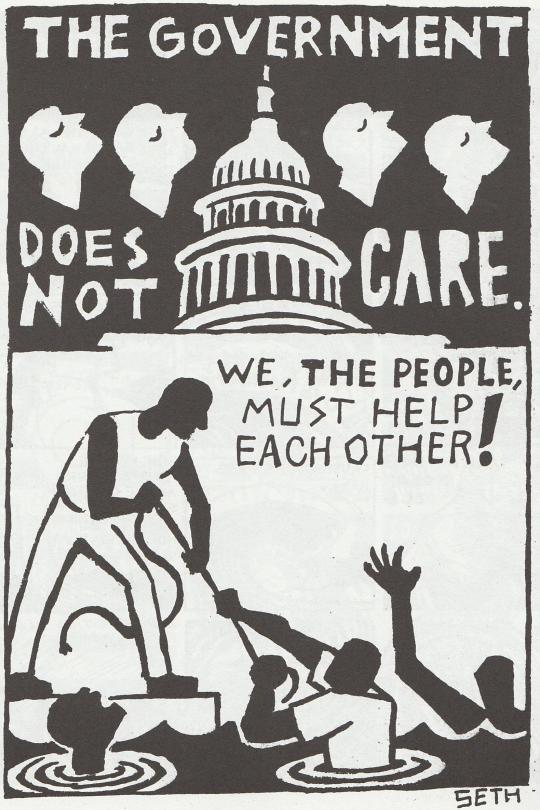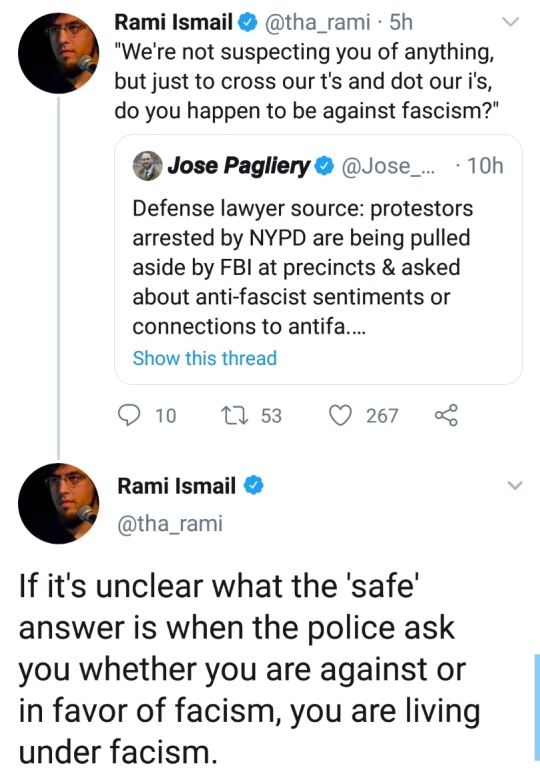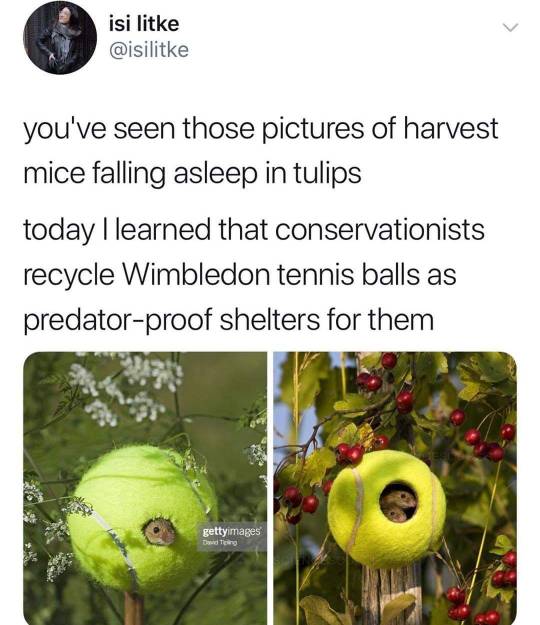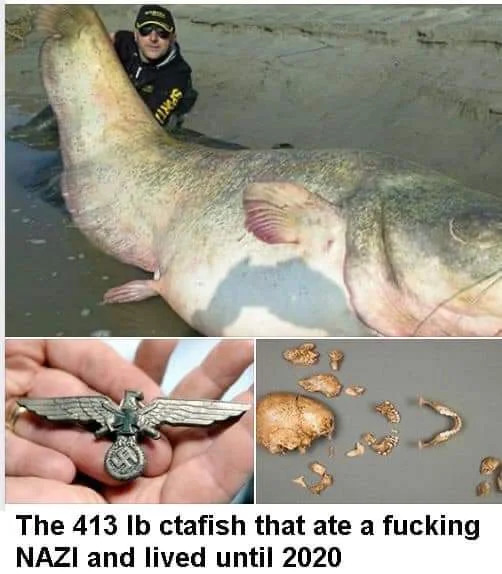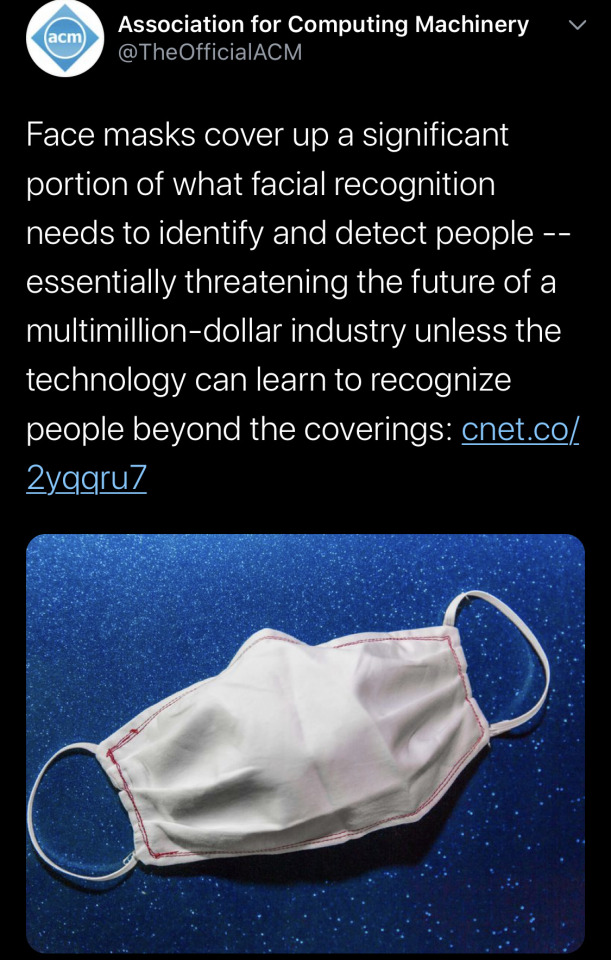Text
Commentary from others:
Some security plans for Unite The Right 2 got leaked on Twitter and too many people were mocking how terribly made this is rather than talking about the fact that fascists are actively planning and developing tactics to straight up kidnap antifascists in the street.
Going to the gym solo and showing up with a few comrades and hoping other people will be there and fascists will break and run from confrontation isn’t going to work anymore. Times are changing. If you’re serious about directly confronting fascists in the street you’re gonna need predetermined plans and strategy and yes point people. Decentralized non-hierarchical mob tactics in a chaotic street brawl against organized fascists isn’t gonna do anything but get people arrested at best and killed at worst.




This is basically existing police snatch squad tactics- the crossbow. Yes, antifascists absolutely need to study and understand mass group tactics.
So, two things. One, the American fascist movement is, as a general rule, a paper tiger which has a history of melting in the face of literally any opposition at all. They don’t want confrontation, they don’t want a fight, they want to hurt people, without consequences or risk of repercussions. They are the schoolyard bully that whines ‘no fair’ when their victims hit back. In a street fight they’re more likely to run away, and come back later in small groups to harass isolated stragglers. Two, while keeping this in mind, we need to organize and plan our defense as if they are 100% willing and able to mount a serious challenge, because there are exceptions to every rule, and if we do not prepare for those exceptions there will come a time when a lot of our people get hurt or killed. Preparing for the way things usually are instead of the way things could potentially be is a recipe for failure.
9K notes
·
View notes
Photo

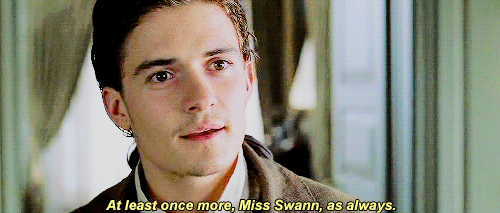
There. See? At least the boy has a sense of propriety.
45K notes
·
View notes
Text

Thanks to the Nanite and Lumen technologies new to Unreal Engine 5, millions of individual triangles can be drawn losslessly in real time with 8k resolution textures and dynamic lighting—no light maps and no baking. #UE5
46K notes
·
View notes
Link
Excuse me while I google “the FBI can eat my whole ass” 50 times per day.
31K notes
·
View notes
Text

if you’re not ending your emails with “kill me! your slave and enemy,” then what are you doing with your life
105K notes
·
View notes
Video
last night my brother asked me if I ever get two completely unrelated songs stuck in my head together and then several hours later sends me this
103K notes
·
View notes
Text
What, exactly, kills people on the banks of the Mississippi River?
I think about St. James Parish in 2020 during pandemic, and the nearly-$10-billion chemical facility currently being installed over a mass slave burial ground and multiple nineteenth century sugarcane plantation estates because parish administrators, hiding their actions, altered rules to accommodate the toxic-benzene-emitting industrial plant without the knowledge of their black neighborhoods. I also think about how St. Gabriel experienced something very similar in the 1990s. Of the top 25 US counties with the highest death rate from covid, 10 are in Louisiana’s chemical industry corridor, including the US’s highest death rate in St. John the Baptist Parish, which is also the same site as the US’s highest risk of cancer from airborne sources. Just how obvious and egregious can environmental racism be?

Recent headlines:


Good question.
Here’s a map of covid death rates and airborne carcinogens to consider:

St. James is among the top 20 counties in the US with the highest death rate from covid. Ignoring the major hint in the term “Cancer Alley,” epidemiologists working for the US federal government have “answered” this question when asked by local media. In recent releases, these doctors, along with chemical company PR representatives, say that “obesity and hypertension” might explain high death rates of black communities in Louisiana. Since 2015, as emissions in the US generally decreased, carcinogenic emissions in Louisiana have steadily increased, and many major new chemical facilities have been permitted to build. Recently, especially since around 2014, administrators and officials of St. James Parish tried to hide what they were doing when they quietly rezoned residential neighborhoods as “residential/future industrial” zones to allow the leasing of land for Form*osa’s $9.4-billion major new petrochemical project which will include about 15 new facilities on 2,300 acres of land, built directly over a slave mass burial ground and two separate nineteenth century sugarcane plantations. The Form*osa site will be allowed to emit over 73,000 pounds of benzene into the air each year (the highest of any location in the US with the sole exception of Shell Norco’s facilities). Form*osa is expected to emit between 1.6 to 3.5 million pounds of airborne emissions each year, and Louisiana regulators are expected to issue the corporation permits which would allow them to double the amount of airborne carcinogenic emissions in the parish when the facilities open in 2022.
This brings to mind something that’s been happening in nearby St. Gabriel since about 1994, involving similar weaponization of zoning regulations against black neighborhoods in Cancer Alley. St. Gabriel chose to incorporate itself as a city so that it could limit chemical facilities. But that didn’t stop the chemical companies. When parish administrators and state regulators really want to make some cash and appease chemical industries, they find ways to subvert local neighborhoods and organizers.
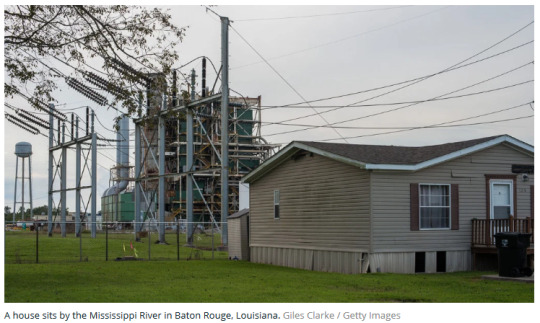
As carcinogenic airborne emissions generally decline in the US, here is the increase in emissions in Louisiana:


Both US government epidemiologists and major chemical companies operating in Cancer Alley, when interviewed by local and major international media publishers since the virus outbreak, have been asked variations of this question: “Do you think that there might be a connection, that people living at these sites with extreme amounts of airborne carcinogens happen to have a disproportionately high risk of death from a virus that attacks the lungs?” And repeatedly, US government-employed epidemiologists and chemical companies have answered by suggesting that “there’s not enough evidence” or “possibly, but who can say?” And instead, they propose that “Cancer Alley has high rates of diabetes, obesity, and hypetension” that “are especially high among minority communities” for some reason, and therefore these “co-morbidities” are to blame.
“Hypertension.”
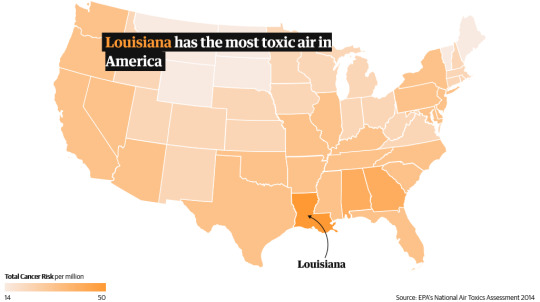
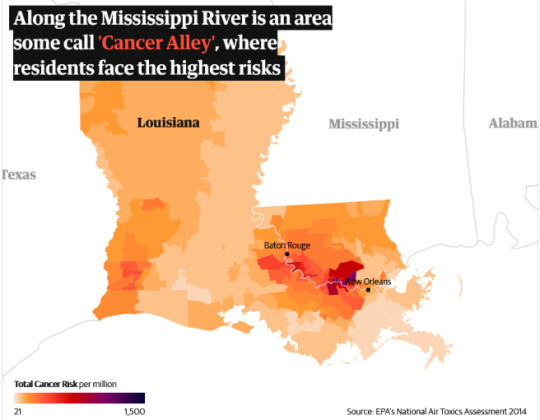
Source:

More “hypertension”:

Location of St. James, St. Gabriel, St. John the Baptist, and major chemical facilities between New Orleans and Baton Rouge [from Pro/Publica and the Times-Picayune]:
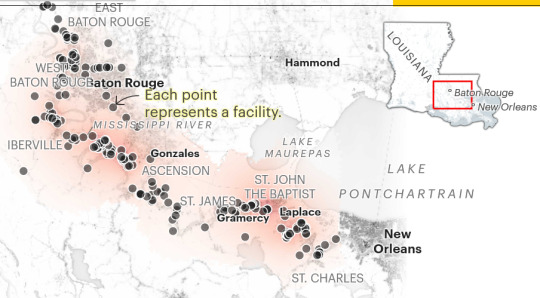


So, what happened in St. Gabriel? In 1994, the unincorporated town of St. Gabriel, along the southern edge of Baton Rouge, north of St. James, voted to become a formal city, apparently so that it could have the power to prevent industrial chemical companies from brutalizing their community. But chemical companies and their allies and enablers in Louisiana state institutions didn’t like that.
In a major report in October 2019, Pro/Publica made some notes. To paraphrase:
St. Gabriel is able to stop chemical companies from expanding within technical city limits, but the Louisiana Department of Environmental Quality still lets major companies build right on the edge of the city, such that, as of 2019, the risk of cancer from airborne emissions is still worse in St. Gabriel than in 99% of the US, and the BCP facility in St. Gabriel is ranked among the top 10 worst emitters of airborne carcinogens in the US.
Back to St. James, the site of Form*osa. In St. James Parish, about 15% of land is already owned by chemical companies, and over 40% of the parish consists of wetlands. In 2014, the parish administrators passed an ordinance allowing chemical companies to expand in the “predominantly black” 5th district, at the same time that the administrators banned chemical companies Petroplex and Wolverine from building near affluent white neighborhoods. At least 3 other major chemical plants are also being developed in the parish. Maps from Pro/Publica and the Times-Picayune:
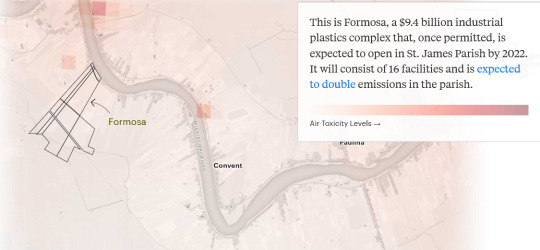
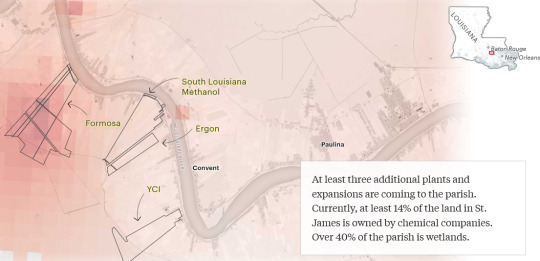
From Ramirez’s article, for Grist, on covid and chemical facilities, 4 May 2020:
But the company has a head start. In 2014, the St. James Parish Council had quietly changed the land use plan for Lavigne’s district from “residential” to “residential/future industrial,” welcoming new industry with little public input. Then, this January, the Louisiana Department of Environmental Quality (LDEQ) approved permits for the Taiwanese plastics manufacturer Formosa to build a $9.4 billion petrochemical complex in St. James Parish. […] Formosa’s own models show that it could emit more of the carcinogenic compound ethylene oxide than just about any other facility in the country. These levels would exceed the benchmark that the EPA uses to determine if exposure poses cancer risks. […] The gargantuan facility will consist of 14 separate plastics plants, two of which are ethylene glycol plants. […] The Formosa spokesperson wrote to Grist that “officials have not suggested there to be any link between industrial emissions and COVID-19.” The company instead pointed to Louisiana’s elevated rates of diabetes, obesity, and hypertension, which “are especially high among minority communities.” Adding insult to injury for the predominantly black residents who live near the proposed facility in Lavigne’s district, Formosa’s chosen location sits on two former 19th century sugarcane plantations and a slave burial ground. Although Formosa did not initially disclose this information, a public records request by RISE showed that the company knew that formerly enslaved people were buried beneath the land during its obligatory land survey in 2018. […] [End.]
Map of St. James, from The Advocate, Baton Rouge:
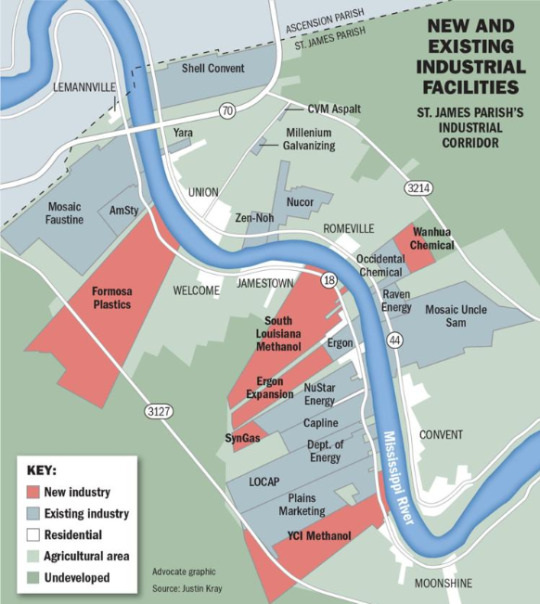

Graphic is from earlier in April 2020, but still:
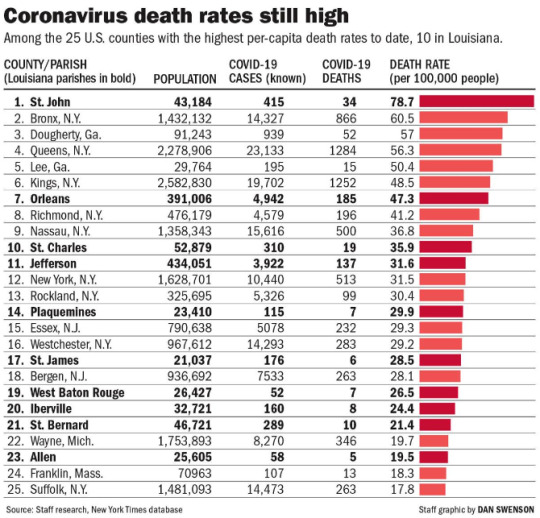
–

Hypertension is real, and it is a burden, and it does kill, so I don’t mean to diminish the experience of people with these difficult conditions and covid-related co-morbidities (I have diabetes myself). But blaming hypertension for environmental racism isn’t satisfactory.
Of the top 25 counties in the US counties (with a population over 5,000) with the highest death rate from covid, 10 are in Louisiana, including St. James Parish, which sits right in the geographic center of Cancer Alley. And St. James Parish sits immediately adjacent to and shares a border with another notable site: St. John the Baptist Parish, which is the US county with the highest death rate from covid and also the site of the US’s highest risk of cancer from airborne sources and also the site of the only chemical facility in the US that releases carcinogenic chloroprene. St. James Parish also shares a border with Ascension Parish, which has the highest amount of toxic airborne emissions in Louisiana, at over 12.5 million pounds emitted each year.
From the Grist article, May 2020:
“So many people here have died of cancer. 2014 was a real awakening for me, because I lost five people that were very close to me,” Felton told Grist. “My sister-in-law died first of cancer in February, then my brother-in-law the next month, then my husband, he died of respiratory problems. If that’s not a red light going on telling me something is wrong, then what is?” Outside her window, she can already see two chemical facilities on the horizon, and if it wasn’t for the pandemic, she said dark smog would usually obscure her view of the facilities. She worries about what will happen when Formosa’s operations begin. “Somebody needs to do something.”
But don’t forget: The US government, its doctors, and major chemical companies say that it’s the “hypertension” which kills people.
4K notes
·
View notes
